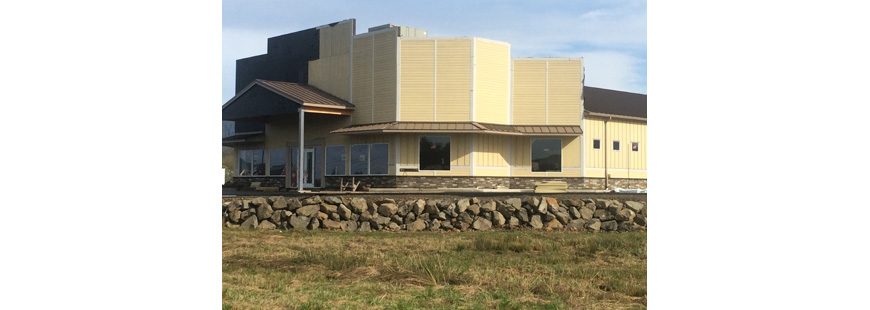Photo: The Tillamook Bay floodplain’s newest resident
As I delve into my 50th+ blog post for the Marine Fish Conservation Network, I try and not overlap issues that I’ve covered before. Thankfully, human behavior has left me with a whole lot of low hanging fruit. It is for this reason, this post is “Volume 3,” of what is sure to enable me to write a book on bad human behavior and how we are working our way to the extinction of wild salmon from planet Earth.
Yea, I know, it sounds a bit extreme, but wasn’t it just a few decades ago when cowboys thought the salmon resource was limitless? Or the Great Plains bison for that matter? Well, we know where these stories are headed. It does seem as if our salmon populations have leveled off, but we’re just in year one of what is looking to be a dramatic downturn in Chinook populations for the near future. Hopefully, it’s just a hic-cup that will soon remedy itself when the warm water blob finally dissipates. That is going to dissipate, right?
Well, this edition of stupid human tricks is so stupid, it’s not really funny. And you may have as difficult a time seeing the connection as I did, but only until the next flood in Tillamook County.
Now who can’t appreciate a new furniture store? I’ve bought a bunch of furniture from the not-to-be named furniture store in Tillamook, shown at the top of this post. Their previous location was also in the floodplain, but for that matter, the entire town of Tillamook is IN the floodplain. But at least it was already established versus building a new site in a field that has a history of flooding, quite extensively in the last decade as a matter of fact. What makes this stupid human trick even more comical, is just blocks away, a long-standing Safeway store finally gave up the gumption, and moved out of a similar location, onto higher ground, not far from where this furniture store has operated for the last who knows how many decades. The old Safeway store sight has been restored to a grass lot, where I’m pretty sure would never qualify again for flood insurance due to its flooding history.
So, how does one solve the issue of flooding potential when one builds in an active floodplain in Tillamook County? Well, you simply elevate the floor of your building! Surely if you bring your facility skyward just another 4 or 5 feet, that should solve the problem. Of course we won’t have the answer to that question until a 200-year flood event comes along. I think there’s only been five 100-year events in the last 15 years in Tillamook, so we should have an answer to that before too long.
I wonder where the flood waters will go during the next flood event? Will it be the Subway sandwich shop? Car Quest parts store, the adjacent mechanic’s shop? All of the above, really. Nothing like making good with your neighbors…
Wait, there’s more! (I’ll be here all night, folks). All the while construction in the floodplain is going on in the name of progress, the Southern Flow Corridor project is finally past all the red-tape and fundraising barriers (it’s a $9 million dollar project) to get underway and start providing some benefit. And I’ll tell you this, if “flood mitigation” wasn’t a major component of this project, it likely would have feel short of community, local government and financial support. This project should have immense benefits to fish species in the Tillamook Bay Basin. Anytime you start breaching dikes and recovering saltwater marsh habitat, where all our salmonids rear for some time during their lifecycle, it’s going to have some sort of benefit in recovering these fish species.
Well, let’s talk about something good for a change, much more likely to warm the cockles of our hearts. This project is going to have some tremendous benefits. A recent analysis showed that for every acre of restored wetland habitat in salmon nation, we see 11 – 15 more returning adults come back to the spawning grounds. That’s a pretty good return on investment given the current price of wild salmon on the marketplace, or the price of a guided fishing trip! This is a project well worth the wait. More on the project benefits can be found here, but the key take-away from this type of project is diversifying the life histories of juvenile coho and Chinook salmon, enabling them to better survive in a changing world.
Here’s the best idea: let’s learn from our mistakes, but better yet, forecast the dangers ahead so instead of pushing up against existing users of our fragile natural resources, we get to secure the best habitats, intact ecosystems and most abundant and robust species of fish as a “bank” for the future. Instead of drawing off of the principle of these secured resources, we just draw down the interest that we’ve earned over time, never compromising the nest egg we’ve worked so hard to secure. How do you think our children will judge us if we adopt this philosophy, versus the one we currently have in place?
By the way, the rainy season has just begun, so be ready for a fire sale, or um, a flood sale, on furniture with just a hint of saturated cow manure smell to it. Coming to a furniture store in Floodplain, Oregon.


